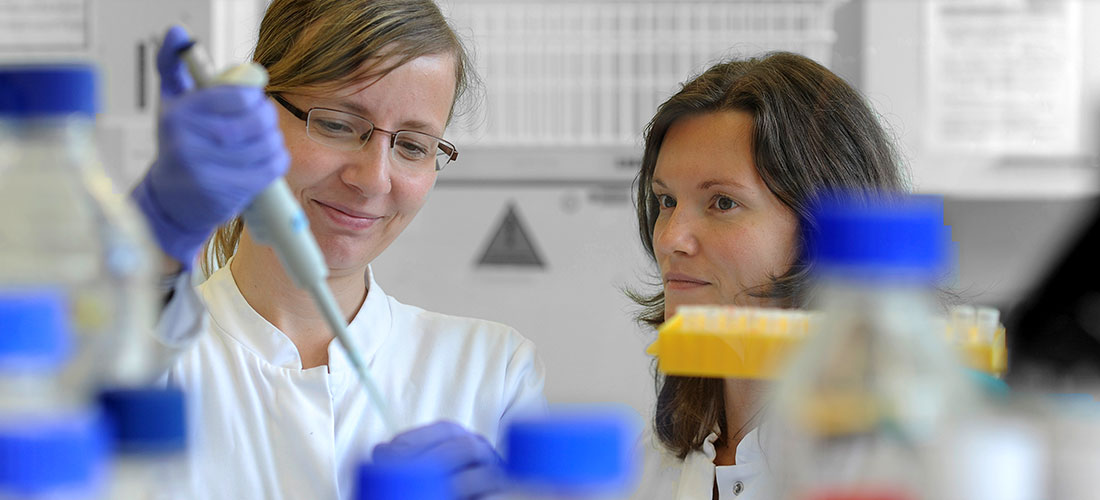A07: Targeted phosphoproteomics-based prediction of drug responses to combinatorial treatment
High-risk and relapsed neuroblastoma is characterized by perturbed cellular signaling networks that contribute to therapy resistance in the course of tumor evolution. Beyond identifying mechanisms and signaling pathways regulating or interfering with tumor evolution, future therapy success depends on reliably predicting resistance development and identifying individualized combinatorial or sequential treatment regimens. We hypothesize that combining targeted phosphoproteomics with computational modeling will allow us to better predict how neuroblastoma responds to targeted drugs and their combinations. An important first step is preclinical modeling and efficacy evaluation of targeted inhibitor combinations in neuroblastoma cell lines. Reliably predicting combinatorial treatment effects in tumor cells is complicated by feedback loops in cellular signaling networks as well as the multiple targets that individual drugs often have. Recent progress in proteomic technologies has enabled detection of preselected sets of (phospho)peptides with increased sensitivity and throughput, positioning mass spectrometry-based phosphoproteomics as the best readout for cell signaling states to date. Indeed, integrating phosphoproteomic data with computational models has been shown to predict treatment response. Project A07 will make use of these technological advances and combine our expertise in targeted proteomics (Selbach lab) and computational modeling (Blüthgen lab) to characterize major signaling pathways in high-risk neuroblastoma cell lines as a first step to identify new promising combinatorial or sequential treatment regimens. Analytical methods to detect signalling network states that could be predictive for drug sensitivity will be improved from two sides in Tasks 1 and 2. A targeted phosphoproteomic panel covering the most important signaling sites in neuroblastoma will be designed (Task 1) and comprehensive catalogs of on- and off-target effects for the drugs used in perturbation studies will be defined by the unbiased method of thermal proteome profiling applied to lysates of three representative neuroblastoma cell lines (Task 2). Task 3 will develop a computational tool that converts phosphoproteome profiles into easily interpretable pathway activity scores, solving the problem of working with high-dimensional data and producing a tool with diagnostic potential. This tool will then be applied to a larger representative cell line panel in Task 4 to identify groups of cell lines with similar signaling modes. For selected representative cell lines, we will perform extensive phosphoproteomic perturbation experiments and use that data to develop computational models to generate hypotheses about resistance mechanisms and synergies for combinatorial treatments, taking the first steps towards clinical translation. We will specifically assess links between known genomic alterations (CRC existing data and A01), drug treatment and the signaling state in A07. Our goal is to provide computational models that reliably predict the most effective combinatorial drug treatments and schedules specifically tailored to signaling configurations in the primary tumor or metastatic cells in individual patients as a starting point for early clinical trial design.
PhD positions and place of work: 2
1 wet-lab with interest in bioinformatics (PI Matthias Selbach, MDC Berlin)
1 computational (PI: Nils Blüthgen, Charité Berlin)



